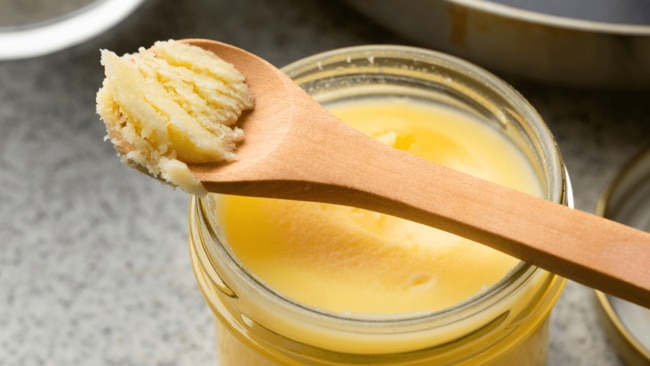Is beef tallow the new superfood?
We wouldn't say goodbye to olive oil just yet...

Lifestyle
Don't miss out on the headlines from Lifestyle. Followed categories will be added to My News.
Have you seen beef tallow kicking around your TikTok algorithm? Nutritionist and dietitian Susie Burrell weighs in on the popular ingredient, and gives her verdict on whether it's worth buying into the trend.
If you have never heard of tallow before seeing it pop up all over social media, it may come as a surprise to know that your grandmother, and almost certainly your great-grandmother, used it daily as the primary source of fat and base of many of their hearty, home-cooked meals.
A concentrated source of fat, more commonly used nowadays to fuel machinery or to lubricate engines than to cook food with, it appears that beef tallow is making a comeback in kitchens, and even beauty cabinets around the world
What is beef tallow?
Tallow is a type of fat that comes from the parts of an animal that are not sold as meat and as such is often considered a byproduct of meat processing.
Made from fat that may be attached to the animal’s organs or connective tissue, tallow is obtained by melting down this fat to separate it from any impurities and then allowing it to form a sold, soft type of rich fat, of which is 45-50 per cent saturated. This is compared to butter which is roughly 60 per cent saturated.
How is it used?
Prior to the growth of the vegetable oil industry in the 1950s, beef tallow was one of the most common types of fat used in cooking, as a cheap and highly functional cooking ingredient.
In the United States in particular, until as late as the 1990s, beef tallow was frequently used to make ‘shortening’ used for deep frying and to make a range of baked goods and pastry-based foods. In fact, tallow was used to cook McDonalds fries.
Why is everyone talking about beef tallow now?
More recently, tallow has been making a comeback with younger audiences as the ultimate product to use on your skin, with a range of soaps and creams promoted for their base of a sustainable, grass feed beef tallow.
While it may not be a vegan’s ideal skincare solution, others are making the swap from their regular moisturisers and occlusicves to beef tallow thanks to its “natural” alternatives to “unnatural” chemicals found on the shelf.
In current times, when food, and in particular good quality oils are at prices never before seen, some people are opting for tallow as a cost-effective option that is easy to make yourself at home from leftover cuts of animal sinew and connective tissue you can get or purchase from local butchers – then re-using it to cook other food.
The nutritional low-down
Indeed, beef tallow is not overly difficult to make and indeed cheap, but when it comes to nutrition, there is not a lot that can be said about tallow. Highly saturated, and minus the antioxidants and nutrients a fresh Extra Virgin Olive Oil offers, while tallow has a rich mouthfeel, there is nothing overly healthy about it.
While you can buy tallow from some butchers, making it yourself can be tricky given you are boiling up offcuts of meat processing which can be smelly and messy and certainly not for everyone.
What type of fat should I use?
Some cultures will routinely used other solid forms of fat such as ghee to create the rich mouthfeel of traditional dishes like curry, and while ghee has a similar nutritional make-up to tallow, it is made from a base of butter to create a harder product that keeps well at room temperature making it a versatile type of fat.
Whilst relatively expensive, when it comes to health-related benefits from a cooking oil, Extra Virgin Olive Oil is the only oil for which there is evidence to show health related benefits thanks to its naturally high antioxidant content.
This does not mean there is anything wrong with using beef tallow. Like all fats, it should be used in moderation as we do not need a lot of added fat in the diet in general, but when it comes to your health, and even skin health, there are no clear benefits from tallow despite what those on social media may be claiming.
More Coverage
Originally published as Is beef tallow the new superfood?





